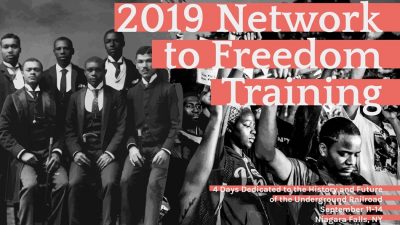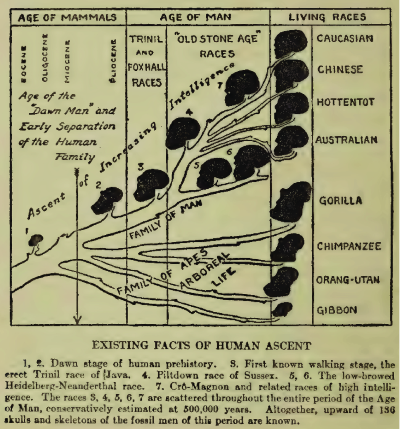
The National Park Service/National Underground Railroad Network to Freedom (NTF) Conference was held September 11-14, 2019, in Niagara Falls. The title of the conference was Crossings: Bridging the Authentic Underground Railroad Past to the Present. The Association for the Study of African American Life and History (ASALH) was a partner.
Below are the multiple keynote addresses given during the conference plus a few of the sessions. So many of the individual sessions were case studies about what specific communities have done that it is impossible to present them in a blog without duplicating the entire conference program. Therefore only a few have been selected because they directly relate to the keynote speakers or are of a general nature.
The speakers are not presented in order of appearance. I start with the more general ones and conclude with a local focus on Niagara Falls, the host site of the conference.
The first speaker asks us to look beyond the individual site to the larger network involved.
The Underground Railroad in the North: From Myth to History
Judith Wellman
Historically, research on the Underground Railroad in northern states has often focused on individual safe houses, usually owned by European Americans. Using examples from New York State, this presentation suggests that, instead of focusing on individual houses, research can more usefully focus on the Underground Railroad as a network. The focus becomes not only European American families who kept safe houses but also African Americans who escaped from slavery. Many freedom seekers settled in northern states. Finally, the network includes allies who raised money, collected clothes and food, found jobs, and often sold property to those who chose to settle in the North. Sources for studying the story of the Underground Railroad in North are sometimes similar but often different from sources available for southern states. This presentation will review a variety of sources, with a special focus on state and federal census records. Finally, it will suggest a five-point scheme for evaluating research on potential Underground Railroad sites.
The second speaker follows up on the last line of the previous abstract by focusing on the task of identifying individual sites within the network.
What You Know, What you can say, What you can verify: Strategies for Researching Underground Railroad Sites
Cheryl LaRoche
Researching Underground Railroad sites, people and events can be a complex minefield filled with false leads, mistaken identities and doubt. When we think of oral histories and especially of half-truths, we often focus on the “half” rather than on the “truths.” Researching and authenticating sites with an African American historical component can be especially challenging. The research strategies presented in this talk will begin by discussing how to work responsibly with conjecture, speculation and oral history in the early phases of identifying potential new sites or undiscovered participants. Using escapes by water around Maryland’s Chesapeake Bay as her case study, Dr. LaRoche will demonstrate the “building blocks” that lead to verification. Understanding the interrelationships among local, regional and national as well as international histories leads to identification of potential Underground Railroad “markers.” These markers, in turn, help establish authenticity for potential Underground Railroad sites.
The third presentation addresses the issues of organizing the sites of the network and how to make the message public.
Keeping the History Alive – Underground Railroad Consortium of NYS
Mary Liz Stewart; Judith Wellman; James Hotchkiss
While NYS was heavily invested in the institution of enslavement, it was, as well, a bastion of antislavery effort. Over the last twenty years much research has been conducted by academic and community researchers that has resulted in the emergence of a large body of locally focused Underground Railroad documentation. With this documentation comes the question, ‘What do we do with it?’ Do we leave it to the academic researchers? Do we take it out to the public? What, if any, is our responsibility to those whose inspiring voices had been written out of history and were being uncovered?
We are a storytelling species. This next presenter brings a personal touch to the storytelling as a descendant of someone involved in the Underground Railroad and is based in Niagara Falls.
Present Day Freedom Seekers and The Power of Our Stories
Saladin Allah
What is your story and how does it serve to inspire, empower and educate others to bring beauty to this world and repair what is broken? Is this important and why?
Present Day Freedom Seekers and the Power of Our Stories is an enlightening presentation about knowledge of self, the value of our heritage and the journey of self-discovery through accessing, articulating and preserving our story. Through sharing my personal story as a descendant of famed underground railroad freedom seeker Josiah Henson, my professional work in the area of youth outreach and community engagement, I discuss the importance and urgency of everyday people finding the sense of agency in their legacy as modern day freedom seekers.
I chose this presentation because it speaks of the role of the state tourism department in promoting visitations to the sites of Underground Railroad in the state. I suspect that the story varies from state to state in the support of the state tourism departments at all or beyond gestures devoid of substance.
A Generation in the Making – Maryland as the World’s Most Powerful Underground Storyteller
Marci Ross
Over the last 20 years, the Maryland Office of Tourism has led the effort to open up Maryland’s
Underground landscapes and waterways to a world-wide interested audience. The initiative has survived numerous challenges all while continuing the effort of cross-cultural and consistent stakeholder engagement, world class visitor experience development and effective consumer messaging. The initiative has been successful for many reasons, among the most significant has been the partnership with the National Underground Railroad Network to Freedom.
During this session attendees will learn the process the Maryland Office of Tourism and their partners utilized to research, fund, build, market and sustain the Underground Railroad and Network to Freedom stories that make it an Underground Railroad travel destination second-to-none.
The following three presentations are about the host site, Niagara Falls. The first one provides an historical perspective. The second talk addresses a specific site. The third one focuses on the local tourism effort (not the state).
The Underground Railroad in the Niagara River Borderland
Karolyn Smartz Frost
Borderland theory, originally coined to describe conditions in regions bordering modern nation states, has recently found a retrospective application in Underground Railroad studies. For people of African descent, the region bordering the Niagara River represented a transitional space from one where they could be considered enslaved, to the other side, where both laws and attitudes dictated that they could not. Collaboration was essential between African American and African Canadian communities on either side of the Niagara River to ensure not only the effective transportation of freedom seekers from one legal reality to the other, but also their safe resettlement in British colonial Canada.
In this the Niagara Frontier was a true borderland region, extending the Underground Railroad-era activism on behalf of freedom seekers far into the hinterland on either side of the international boundary between the United States and Canada. In the years before the Civil War, Black North Americans traversed the Niagara River border regularly and for myriad purposes, while enjoying the benefits, while that very real boundary line provided them protection from re-enslavement on the Canadian side. Karolyn will discuss the cross-border resistance movement aimed at securing freedom for thousands of formerly enslaved people, with particular attention to the borderland represented by upstate New York and what today is southern Ontario.
The Cataract House and the Underground Railroad in Niagara Falls: History, Archaeology, and Transnationalism
Judith Wellman; Karolyn Smardz Frost; Douglas Perrelli
From the early 19th century until the present, Niagara Falls has been magnet for tourists from around the world. As one of the shortest crossing points between the U.S. and Canada, it also attracted people escaping from slavery on the Underground Railroad. This is the story of the Cataract House, its waiters, and some of those who escaped from slavery through this hotel, as revealed in documents, archaeological investigations, and transnational family histories.
Reimagining This Place: Heritage Tourism in Niagara Falls
Sara Capen
One of the most pressing issues facing the Niagara region has been a deteriorating economy, particularly in and around Niagara Falls, where the City of Niagara Falls has experienced a staggering 60% decline in population since 1960. Capen will share strategies that allow the Niagara Falls Underground Railroad Heritage Center (NFNHA) to return $6.10 in products and services for every $1.00 it receives in federal funding.
As the executive director of the Niagara Falls National Heritage Area, a 15-mile Niagara River corridor, Capen will also share how heritage tourism projects have had a positive, measurable impact on the region. These include the Discover Niagara Shuttle, which contributed over $35 million to the local economy in its first two years of operation, and the creation of the Niagara Falls Underground Railroad Heritage Center, a nationally award winning museum that has anchored the north end of the city with a renewed sense of community pride.
I am not sure if this is an annual event or not. There was no mention of “next year’s conference” in the program. The welcoming letter mentioned “this year’s theme” suggesting there have been conferences in the past. It also states the conference this year was a “new format and approach.” I don’t know what the previous conferences were been so I can’t comment on the change. My impression from the use of the word “training” and “training experience,” that the hope was that the participants would bring back to their communities lessons learned from the conference that they can apply themselves.





Really sorry I missed this. I have gone to conferences in the past and have always found them to be insightful and entertaining. This is the kind of programing I wish the ‘History Channel’ would broadcast (despite it’s lack of sophistication) instead of “D.B.Cooper” and “The Curse of Oak Island”. Just so those of us who couldn’t attend, could.
Peter — Along this line, I heard in passing a reference that the root cellar at the Miller House was used as a way-station on the underground railroad for runaway slaves to get to Canada. Don’t know that there’s any veracity to that, but mention it FYI & FWIW — Best, Ed